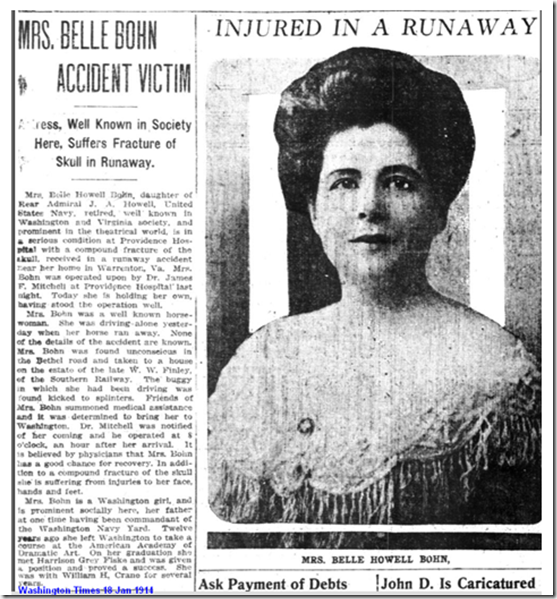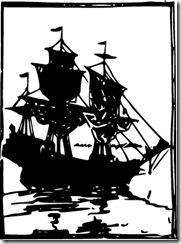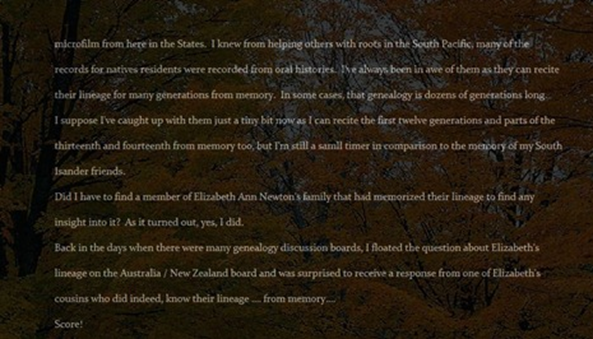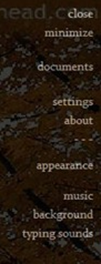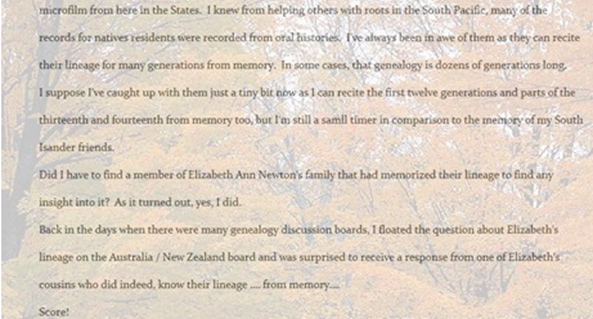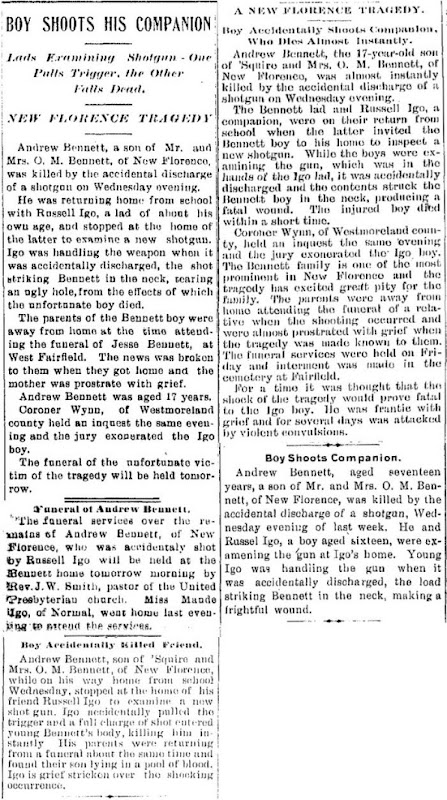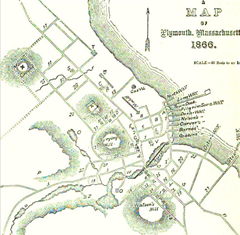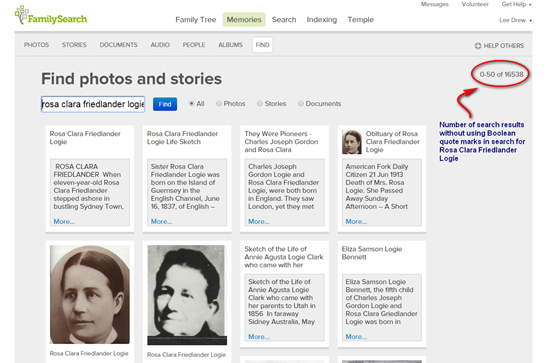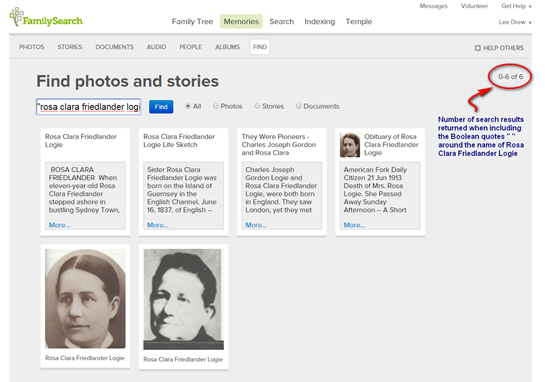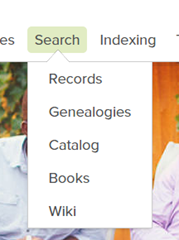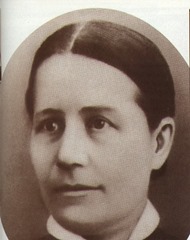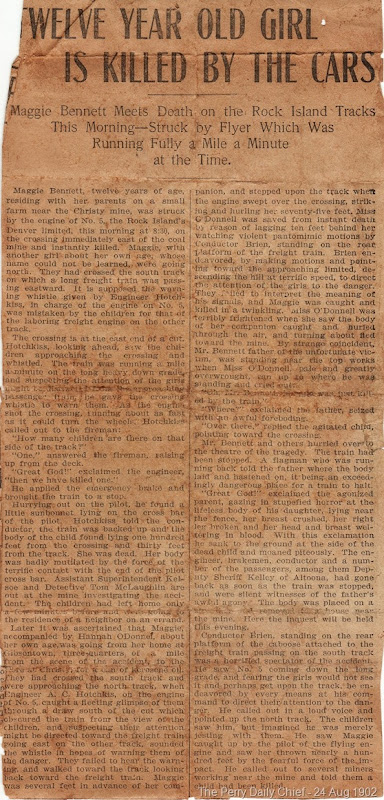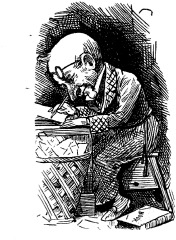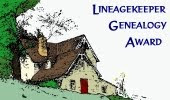-
Ablepsy - Blindness
-
Ague - Malarial Fever
-
American plague - Yellow fever.
-
Anasarca - Generalized massive edema.
-
Aphonia - Laryngitis.
-
Aphtha - The infant disease "thrush".
-
Apoplexy - Paralysis due to stroke.
-
Asphycsia/Asphicsia - Cyanotic and lack of oxygen.
-
Atrophy - Wasting away or diminishing in size.
-
Bad Blood - Syphilis
-
Bilious fever - Typhoid, malaria, hepatitis or elevated temperature and bile emesis.
-
Biliousness - Jaundice associated with liver disease.
-
Black plague or death - Bubonic plague.
-
Black fever - Acute infection with high temperature and dark red skin lesions and high mortality rate.
-
Black pox - Black Small pox
-
Black vomit - Vomiting old black blood due to ulcers or yellow fever
-
Blackwater Fever - Dark urine associated with high temperature.
-
Bladder in Throat - Diphtheria (Seen on death certificates)
-
Blood poisoning - Bacterial infection; septicemia
-
Bloody flux - Bloody stools
-
Bloody sweat - Sweating sickness
-
Bone shave - Sciatica
-
Brain fever - Meningitis
-
Breakbone - Dengue fever
-
Bright's disease - Chronic inflammatory disease of kidneys
-
Bronze John - Yellow fever
-
Bule Boil - tumor or swelling.
-
Cachexy - Malnutrition
-
Cacogastric - Upset stomach
-
Cacospysy - Irregular pulse.
-
Caduceus - Subject to falling sickness or epilepsy.
-
Camp Fever - Typhus; aka Camp diarrhea
-
Canine Madness - Rabies, hydrophobia.
-
Canker - Ulceration of mouth or lips or herpes simplex.
-
Catalepsy - Seizures / trances.
-
Catarrhal - Nose and throat discharge from cold or allergy.
-
Cerebritis - Inflammation of cerebrum or lead poisoning
-
Chilblain - Swelling of extremities caused by exposure to cold
-
Child Bed Fever - Infection following birth of a child.
-
Chin Cough - Whooping cough.
-
Chlorosis - Iron deficiency anemia.
-
Cholera - Acute severe contagious diarrhea with intestinal lining sloughing.
-
Cholera mrbus - Characterized by nausea, vomiting, abdominal cramps, elevated temperature, etc. Could be appendicitis.
-
Cholecystitus - nflammation of the gall bladder
-
Cholelithiasis - Gall stones
-
Chorea - Disease characterized by convulsions, contortions and dancing.
-
Cold Plague - Ague which is characterized by chills
-
Colic - An abdominal pain and cramping
-
Congestive Chills - Malaria
-
Consumption - Tuberculosis.
-
Congestion - Any collection of fluid in an organ, like the lungs.
-
Congestive Chills - Malaria with diarrhea.
-
Congestive Fever - Malaria.
-
Corruption - Infection
-
Coryza - A cold
-
Costiveness - Constipation
-
Cramp Colic - Appendicitis
-
Crop Sickness - Overextended Stomach
-
Croup Laryngitis - diphtheria, or strep throat
-
Cyanosis - Dark skin color from lack of oxygen in blood
-
Cynanche - Diseases of throat
-
Cystitis - Inflammation of the bladder
-
Day Fever - Fever lasting one day; sweating sickness
-
Debility - Lack of movement or staying in bed
-
Decrepitude - Feebleness due to old age
-
Delirium tremens - Hallucinations due to alcoholism
-
Dengue - Infectious fever endemic to East Africa
-
Dentition - Cutting of teeth
-
Deplumation - Tumor of the eyelids which causes hair loss
-
Diary Fever - A fever that lasts one day
-
Diptheria - Contagious disease of the throat
-
Distemper - Usually animal disease with malaise, discharge from nose and throat, anorexia
-
Dock Fever - Yellow fever
-
Dropsy - Edema (swelling), often caused by kidney disease (Glomeruleonephsitis) or heart disease
-
Dropsy of the Brain - Encephalitis
-
Dry Bellyache - Lead poisoning
-
Dyscrasy - An abnormal body condition
-
Dysentery - Inflammation of colon with frequent passage
-
Dysorexy - Reduced appetite of mucous and blood.
-
Dyspepsia - Indigestion and heartburn. Heart attack symptoms.
-
Dysury - Difficulty in urination
-
Eclampsy - Symptoms of epilepsy, convulsions during labor
-
Ecstasy - A form of catalepsy characterized by loss of reason
-
Edema Nephrosis - swelling of tissues
-
Edema of lungs - Congestive heart failure, a form of dropsy
-
Eel thing - Erysipelas
-
Elephantiasis - A form of leprosy
-
Encephalitis - Swelling of brain; aka sleeping sickness
-
Enteric Fever - Typhoid fever
-
Enterocolitis - Inflammation of the intestines
-
Enteritis - Inflations of the bowels
-
Epitaxis - Nose bleed
-
Erysipelas - Contagious skin disease, due to Streptococci with vesicular and bulbous lesions.
-
Extravasted Blood - Rupture of a blood vessel.
-
Falling sickness - Epilepsy
-
Fatty Liver - Cirrhosis of liver
-
Fits - Sudden attack or seizure of muscle activity.
-
Flux - An excessive flow or discharge of fluid like hemorrhage or diarrhea.
-
Flux of Humour - Circulation.
-
French Pox - Syphilis
-
Gathering - A collection of pus
-
Glandular Fever - Mononucleosis
-
Great Pox - Syphilis
-
Green Fever / Sickness - Anemia
-
Grippe / Grip - Influenza like symptoms
-
Grocer's Itch - Skin disease caused by mites in sugar or flour
-
Heart Sickness - Condition caused by loss of salt from body
-
Heat Stroke - Body temperature elevates because of surrounding environment temperature and body does not perspire to reduce temperature. Coma and death result if not reversed
-
Hectical Complaint - Recurrent fever
-
Hematemesis - Vomiting blood
-
Hematuria - Bloody urine
-
Hemiplegy - Paralysis of one side of body
-
Hip Gout - Osteomylitis
-
Horrors - Delirium tremens
-
Hydrocephalus - Enlarged head, water on the brain
-
Hydropericardium - Heart dropsy
-
Hydrophobia - Rabies
-
Hydrothroax - Dropsy in chest
-
Hypertrophic - Enlargement of organ, like the heart
-
Impetigo - Contagious skin disease characterized by pustules
-
Inanition - Physical condition resulting from lack of food
-
Infantile Paralysis - Polio Intestinal colic Abdominal pain due to improper diet
-
Jail Fever - Typhus
-
Jaundice - Condition caused by blockage of intestines
-
King's Evil - Tuberculosis of neck and lymph glands
-
Kruchhusten - Whooping cough
-
Lagrippe - Influenza.
-
Lockjaw - Tetanus or infectious disease affecting the muscles of the neck and jaw. Untreated, it is fatal in 8 days.
-
Long Sickness - Tuberculosis.
-
Lues Disease - Syphilis.
-
Lues Venera - Venereal disease.
-
Lumbago - Back pain.
-
Lung Fever - Pneumonia
-
Lung Sickness - Tuberculosis
-
Lying in - Time of delivery of infant.
-
Malignant Sore Throat - Diphtheria.
-
Mania - Insanity.
-
Marasmus - Progressive wasting away of body, like malnutrition.
-
Membranous - Croup Diphtheria
-
Meningitis - Inflations of brain or spinal cord
-
Metritis - Inflammation of uterus or purulent vaginal discharge
-
Miasma - Poisonous vapors thought to infect the air
-
Milk Fever - Disease from drinking contaminated milk, like undulant fever or brucellosis
-
Milk Leg - Post partum thrombophlebitis
-
Milk Sickness - Disease from milk of cattle which had eaten poisonous weeds
-
Mormal - Gangrene
-
Morphew - Scurvy blisters on the body
-
Mortification - Gangrene of necrotic tissue
-
Myelitis - Inflammation of the spine
-
Myocarditis - Inflammation of heart muscles
-
Necrosis - Mortification of bones or tissue
-
Nephrosis - Kidney degeneration
-
Nepritis - Inflammation of kidneys
-
Nervous Prostration - Extreme exhaustion from inability to control physical and mental activities
-
Neuralgia - Described as discomfort, such as "Headache" was neuralgia in head
-
Nostalgia - Homesickness.
-
Palsy - Paralysis or uncontrolled movement of controlled muscles. It was listed as "Cause of death"
-
Paroxysm - Convulsion
-
Pemphigus - Skin disease of watery blisters
-
Pericarditis - Inflammation of heart
-
Peripneumonia - Inflammation of lungs
-
Peritonotis - Inflammation of abdominal area
-
Petechial Fever - Fever characterized by skin spotting Puerperal exhaustion Death due to child birth
-
Phthiriasis - Lice infestation Phthisis Chronic wasting away or a name for tuberculosis
-
Plague - An acute febrile highly infectious disease with a high fatality rate
-
Pleurisy - Any pain in the chest area with each breath
-
Podagra - Gout
-
Poliomyelitis - Polio
-
Potter's Asthma - Fibroid pthisis
-
Pott's Disease - Tuberculosis of spine
-
Puerperal Exhaustion - Death due to childbirth
-
Puerperal Fever - Elevated temperature after giving birth to an infant
-
Puking Fever - Milk sickness
-
Putrid Fever - Diphtheria.
-
Quinsy - Tonsillitis.
-
Remitting Fever - Malaria
-
Rheumatism - Any disorder associated with pain in joints Rickets Disease of skeletal system
-
Rose Cold - Hay fever or nasal symptoms of an allergy.
-
Rotanny Fever - (Child's disease) ???
-
Rubeola - German measles
-
Sanguineous Crust - Scab
-
Scarlatina - Scarlet fever
-
Scarlet Fever - A disease characterized by red rash
-
Scarlet Rash - Roseola
-
Sciatica Rheumatism in the hips
-
Scirrhus - Cancerous tumors
-
Scotomy - Dizziness, nausea and dimness of sight
-
Scrivener's palsy - Writer's cramp
-
Screws - Rheumatism
-
Scrofula - Tuberculosis of neck lymph glands. Progresses slowly with abscesses and fistulas develop. Young person's disease
-
Scrumpox - Skin disease, impetigo
-
Scurvy - Lack of vitamin C. Symptoms of weakness, spongy gums and hemorrhages under skin
-
Septicemia - Blood poisoning
-
Shakes - Delirium tremens
-
Shaking - Chills, ague
-
Shingles - Viral disease with skin blisters
-
Ship Fever - Typhus
-
Siriasis - Inflammation of the brain due to sun exposure
-
Sloes - Milk sickness Small pox Contagious disease with fever and blisters Softening of brain Result of stroke or hemorrhage in the brain, with an end result of the tissue softening in that area
-
Sore Throat Distemper - Diphtheria or quinsy
-
Spanish Influenza - Epidemic influenza
-
Spasms - Sudden involuntary contraction of muscle or group of muscles, like a convulsion
-
Spina Bifida - Deformity of spine
-
Spotted Fever - Either typhus or meningitis
-
Sprue - Tropical disease characterized by intestinal disorders and sore throat
-
St. Anthony's Fire - Also erysipelas, but named so because of affected skin areas are bright red in appearance
-
St. Vitas Dance - Ceaseless occurrence of rapid complex jerking movements performed involuntary
-
Stomatitis - Inflammation of the mouth
-
Stranger's Fever - Yellow fever
-
Strangery - Rupture
-
Sudor Anglicus - Sweating sickness
-
Summer Complaint - Diarrhea, usually in infants caused by spoiled milk.
-
Sunstroke - Uncontrolled elevation of body temperature due to environment heat. Lack of sodium in the body is a predisposing cause.
-
Swamp Sickness - Could be malaria, typhoid or encephalitis
-
Sweating Sickness - Infectious and fatal disease common to UK in 15th century
-
Tetanus - Infectious fever characterized by high fever, headache and dizziness
-
Thrombosis - Blood clot inside blood vessel
-
Thrush - Childhood disease characterized by spots on mouth, lips and throat
-
Tick Fever - Rocky mountain spotted fever
-
Toxemia of Pregnancy - Eclampsia
-
Trench Mouth - Painful ulcers found along gum line, Caused by poor nutrition and poor hygiene
-
Tussis Convulsiva - Whooping cough
-
Typhus - Infectious fever characterized high fever, headache, and dizziness
-
Variola - Smallpox
-
Venesection - Bleeding
-
Viper's Dance - St. Vitus Dance
-
Water on Brain - Enlarged head
-
White Swelling - Tuberculosis of the bone
-
Winter Fever - Pneumonia
-
Womb Fever - Infection of the uterus.
-
Worm Fit - Convulsions associated with teething, worms, elevated temperature or diarrhea.
- Yellowjacket - Yellow fever.
